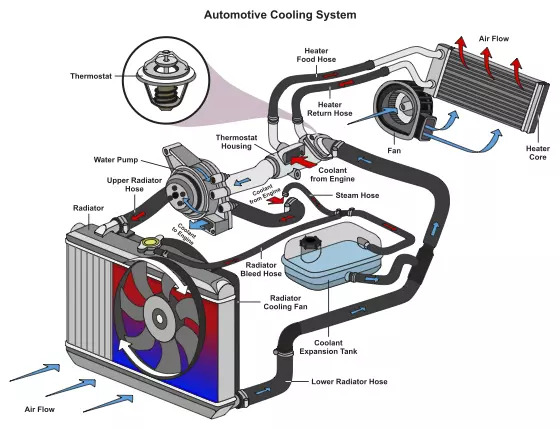
Engine Cooling System with Heater Core
A car's engine is constantly producing heat as it facilitates combustion. Without the engine cooling system, the heat inside the engine would continue to rise, leading to significant damage of its components. To prevent overheating, every engine has a cooling system.
The cooling system is primarily made up of these components:
In nearly every car, the interior heating system uses a heater core, through which hot engine coolant passes through. Then, the blower fan pushes this heat through the vents of the car.

Engine Cooling System with Heater Core
The operation of the cooling system is generally the same for all cars. As shown in the above diagram, the system is made up of five key components. The radiator hoses are filled with coolant. When the engine is started, the crankshaft turns the engine belt, which turns the water pump. This causes the coolant to be pumped all throughout the system.
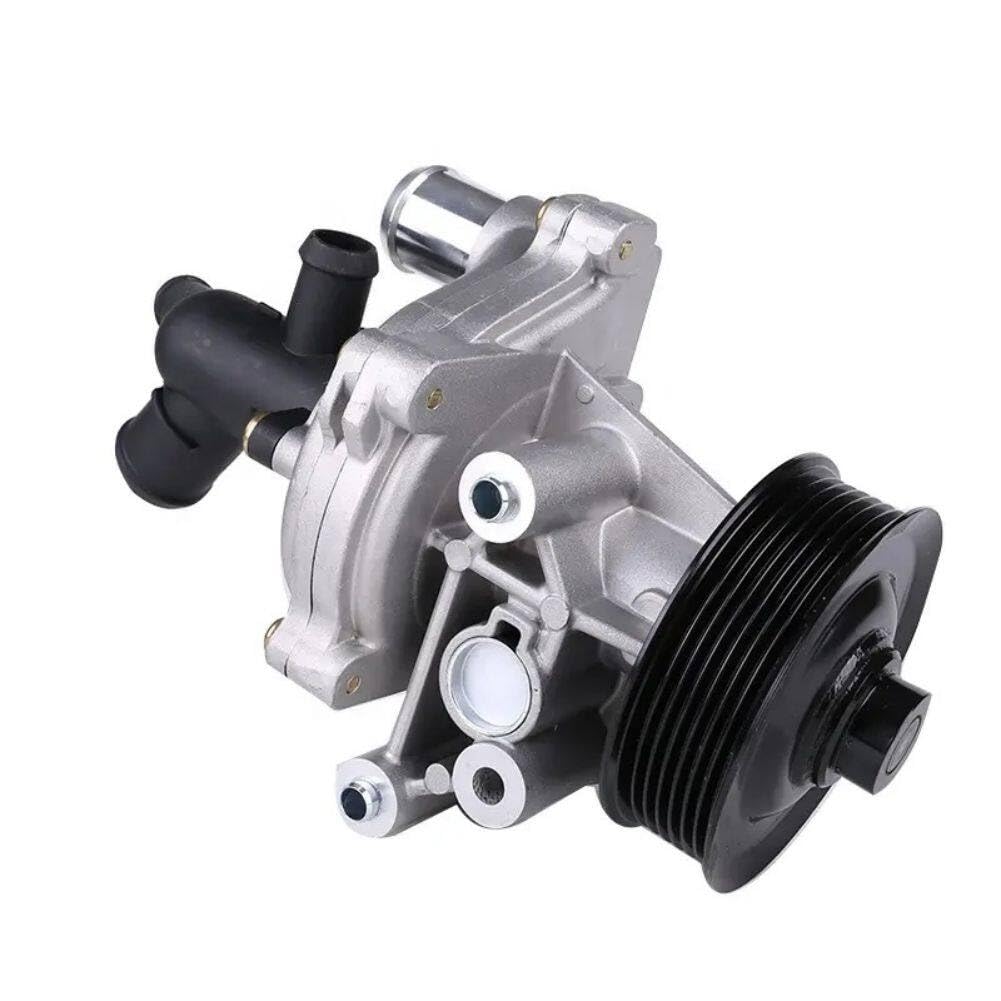
Water Pump
When the engine starts cold, the thermostat keeps the coolant from entering the radiator, allowing the engine to reach its operating temperature faster by keeping the warm coolant circulating. Once the coolant has reached operating temperature, the thermostat opens its valves to allow coolant to pass through the radiator.
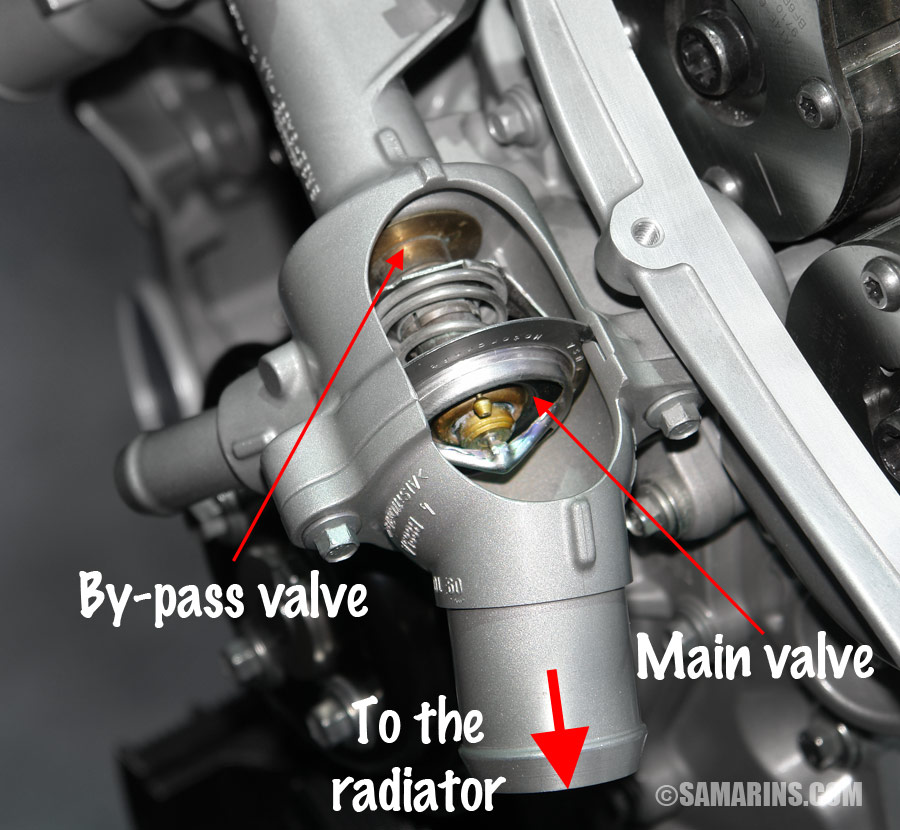
Thermostat
The radiator is essential for removing heat from the coolant. When the coolant comes into the radiator, it is carrying the heat that it absorbed while in the engine. As it passes through the radiator core, air from outside is pulled in by the radiator fan, which is controlled by the ECU. This air removes the heat from the coolant, so that when it exits the radiator into the lower radiator hose, it can be used to absorb more heat when it passes through the engine.
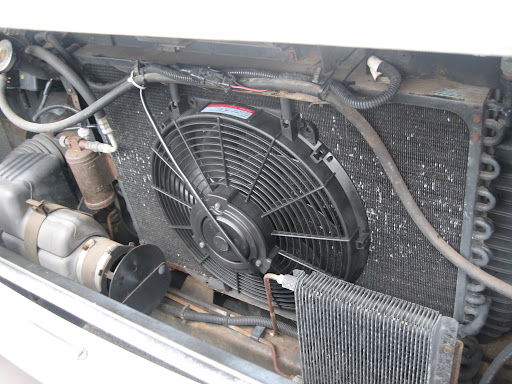
Radiator and Fan
The final main component of the system is the coolant reservoir. This is the tank that stores excess coolant. When coolant heats up, it expands, and since the coolant hoses were already full of coolant, there needs to be a place for the coolant to overflow in order to prevent damage. The coolant reservoir stores this excess coolant, along with extra coolant that is poured in the cap.

Coolant Reservoir
All of these components work to keep the engine at its operating temperature to prevent damage, and this is done by forcing the coolant through special channels in the engine head and block. These coolant passages and jackets are sealed by the head gasket and absorb the heat generated by combustion.

Engine Block Coolant Channels/Jacket
The engine is not the only thing that the coolant passes through. In most cars, coolant also flows through the throttle body, but not to cool it down. To prevent the throttle body components from freezing in cold weather, coolant flows around the assembly to warm it up.
Coolant is the liquid responsible for absorbing the heat from the engine and taking it through the radiator to be removed. This is typically a distilled water and antifreeze mixture (usually 50-50 each). Distilled water by itself is actually better at cooling the engine than a 50-50 mixture. The problem with distilled water is that in cold weather, it can easily freeze around 32 F and lead to damage of the cooling system and hoses. Therefore, the water is mixed with a colored antifreeze concentrate to lower the freezing point of the liquid to around -35 F.
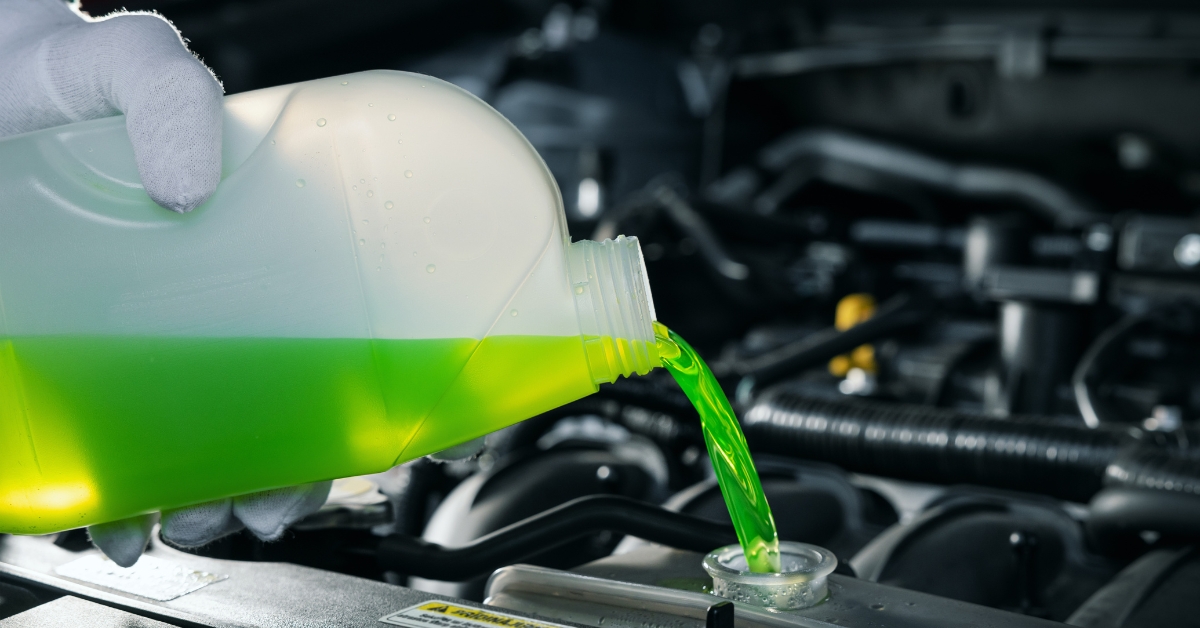
Coolant